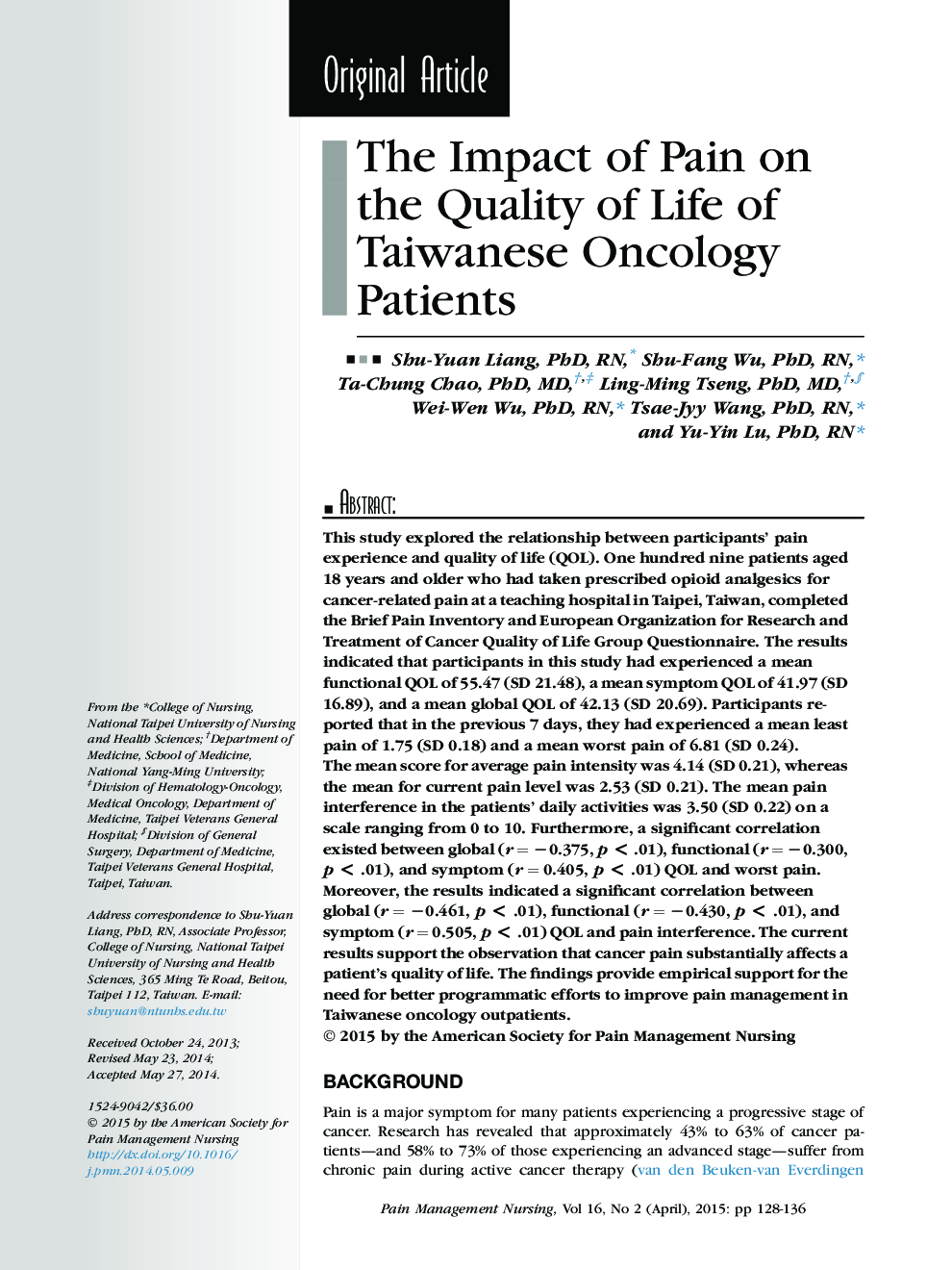| Article ID | Journal | Published Year | Pages | File Type |
|---|---|---|---|---|
| 2673570 | Pain Management Nursing | 2015 | 9 Pages |
This study explored the relationship between participants' pain experience and quality of life (QOL). One hundred nine patients aged 18 years and older who had taken prescribed opioid analgesics for cancer-related pain at a teaching hospital in Taipei, Taiwan, completed the Brief Pain Inventory and European Organization for Research and Treatment of Cancer Quality of Life Group Questionnaire. The results indicated that participants in this study had experienced a mean functional QOL of 55.47 (SD 21.48), a mean symptom QOL of 41.97 (SD 16.89), and a mean global QOL of 42.13 (SD 20.69). Participants reported that in the previous 7 days, they had experienced a mean least pain of 1.75 (SD 0.18) and a mean worst pain of 6.81 (SD 0.24). The mean score for average pain intensity was 4.14 (SD 0.21), whereas the mean for current pain level was 2.53 (SD 0.21). The mean pain interference in the patients' daily activities was 3.50 (SD 0.22) on a scale ranging from 0 to 10. Furthermore, a significant correlation existed between global (r = −0.375, p < .01), functional (r = −0.300, p < .01), and symptom (r = 0.405, p < .01) QOL and worst pain. Moreover, the results indicated a significant correlation between global (r = −0.461, p < .01), functional (r = −0.430, p < .01), and symptom (r = 0.505, p < .01) QOL and pain interference. The current results support the observation that cancer pain substantially affects a patient's quality of life. The findings provide empirical support for the need for better programmatic efforts to improve pain management in Taiwanese oncology outpatients.
